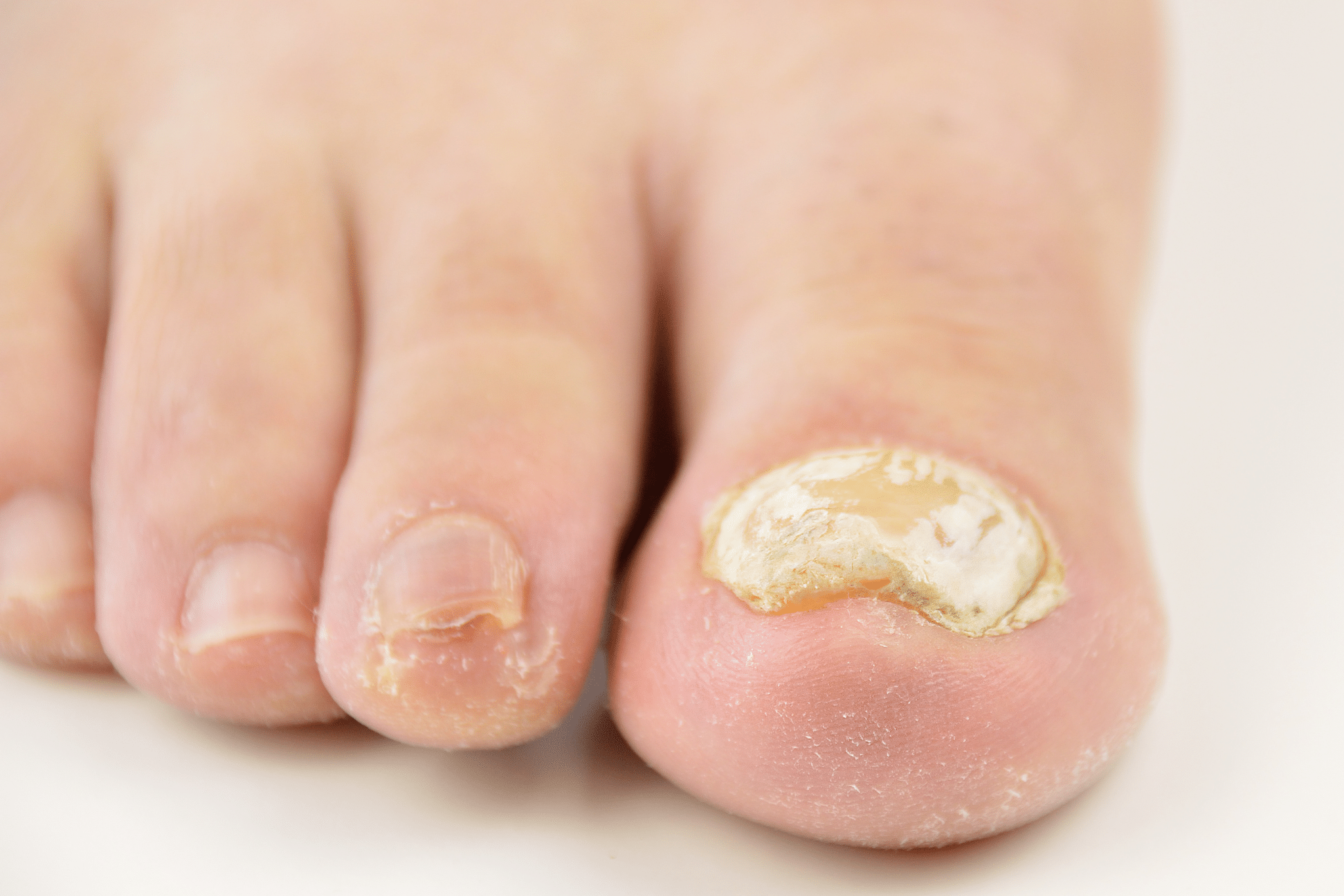Fungal toenails, medically known as onychomycosis, are a common foot ailment that can significantly impact foot health and overall quality of life. This condition, characterized by discolored, thickened, and brittle nails, can lead to discomfort, pain, and secondary infections if left untreated. In this blog post, we provide comprehensive information on the causes, symptoms, and effective treatment options for fungal toenails.
What are Fungal Toenails?
Fungal toenails occur when a fungus infects one or more of the nails. This can result from direct contact with fungi in warm, moist environments, such as locker rooms or swimming pools. The fungi responsible for onychomycosis thrive in these environments and can invade the nail through small cracks or cuts.
The most common cause of fungal toenails is a fungal infection, but other significant risk factors include age, diabetes, and poor foot hygiene. Older adults are more prone to fungal nail infections due to reduced blood circulation and slower nail growth.
Individuals with diabetes have a higher risk due to compromised immune systems and poor blood flow to the extremities. Inadequate foot hygiene, such as not drying feet properly or wearing damp shoes, can create a breeding ground for fungi.
Recognizing Fungal Toenail Symptoms
Recognizing the symptoms of fungal toenails is crucial for early intervention. Common symptoms include discoloration (the nail may turn yellow, brown, or white), thickening (infected nails often become thicker than usual), brittleness (the nails may become brittle and crumbly), and changes in nail shape (the shape of the nail may distort).
If left untreated, fungal toenails can lead to complications such as pain and discomfort (thickened nails can cause pain while walking or wearing shoes) and secondary infections (cracked or damaged nails can lead to bacterial infections).
Diagnosing Fungal Toenails
To accurately diagnose fungal toenails, our podiatrists may perform several diagnostic procedures, including visual examination (initial assessment of the nail’s appearance), nail scraping (collection of nail debris for microscopic examination), and laboratory tests (fungal cultures or molecular tests to identify the specific type of fungus). Seeking a professional diagnosis ensures accurate assessment and tailored treatment plans. Self-diagnosis can lead to ineffective treatments and prolonged suffering.
Effective Treatment Options
- Medical Management: Treatment options for fungal toenails include topical antifungal medications, oral antifungal drugs, and combination therapies. Topical antifungal medications are applied directly to the affected nails and are effective for mild to moderate infections. Oral antifungal drugs are prescribed for severe infections and work systemically from within the body. Combination therapies, which use both topical and oral medications, may be employed for better results. The duration of treatment and potential side effects vary depending on the specific medication used.
- Home Remedies and Lifestyle Changes: Improving foot hygiene is crucial in managing and preventing fungal toenails. Tips include keeping feet clean and dry, wearing breathable footwear, and avoiding sharing nail care tools. Natural remedies with antifungal properties, such as tea tree oil, vinegar, and garlic, may also be beneficial. Tea tree oil is known for its antifungal and antiseptic properties, vinegar’s acidity helps combat fungal growth, and garlic contains antifungal compounds.
- Professional Treatments: In-office procedures offered by our podiatrists may include laser therapy, debridement, and nail removal. Laser therapy targets and destroys fungal cells, debridement involves the removal of thickened nail layers, and nail removal may be necessary for severely infected nails. While professional treatments offer effective solutions, they may require multiple sessions and vary in success rates.
Prevention Strategies
Practical tips for preventing fungal toenails include practicing proper foot hygiene, wearing breathable footwear, and avoiding walking barefoot in public places. Regular foot inspections are also important; conduct regular inspections for any abnormalities and promptly treat minor nail issues to prevent escalation.
When to See Our Podiatrists
If you experience persistent or worsening symptoms, have underlying health conditions like diabetes, or have concerns about treatment efficacy, it is important to seek professional help from our experienced podiatrists.
Early intervention prevents complications and ensures better treatment outcomes. By understanding the causes, recognizing the symptoms, and knowing the effective treatment options for fungal toenails, you can take proactive steps to maintain your foot health.
If you suspect a fungal toenail infection, consult with us for an accurate diagnosis and personalized treatment plan.


